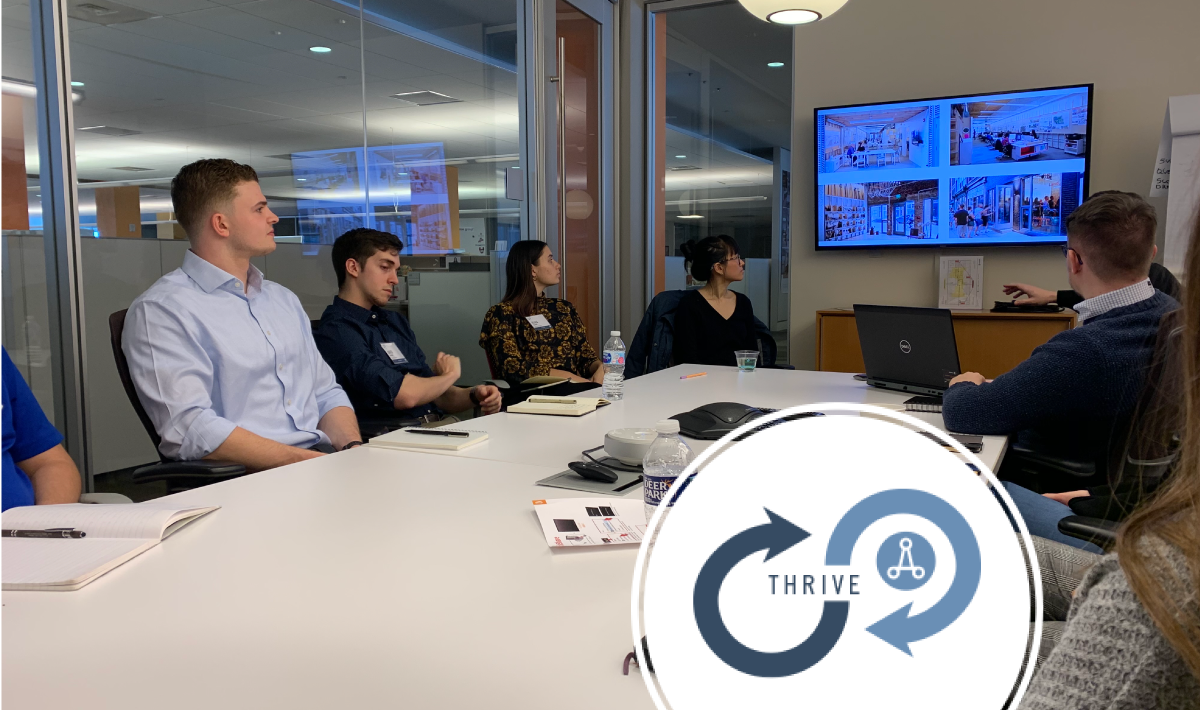If you missed the THRIVE: A Career Prep Event on Saturday, February 29th, then you missed a leap day to remember! Hosted by Jefferson University at Stantec’s Philadelphia Office, students from DC to New York and everywhere in between gathered together to hear from Stantec architects and recent graduates from local Philadelphia schools. Our day was jam packed, full of different workshops about: identifying and styling your personal brand; mock interviews; portfolio reviews; non-traditional architecture paths; best practices for taking the ARE; landscape architecture; and how to stay committed to your passion for advocacy as you begin your first real job in a new city.
It was a beautiful day (especially for those of us who rode in early and left out late), but the wisdom was really raining down on all of us attendees. Thanks so much to everyone who came to speak to us, including: Alex, Savannah, Amanda, Jim, Stan, Clarissa, Richard, and everyone else! A special shout out goes to Zilda Hijazin, our Stantec coordinator and a role model for AIAS Alumni, who went above and beyond to make our short conference absolutely amazing.
Here are the top ten things we learned at THRIVE:
1. When putting together a portfolio, everything you call attention to should highlight what makes you perfect for the kind of firm you want to work for. Ask yourself, what do I want them to think of me after only flipping through my portfolio? Make sure those elements are visible and loud throughout.
2. Use issuu.com to see the architecture portfolios of past and present students just like you! Consider putting your portfolio on the platform as well, in order to make it easy for firms to access. Sometimes you’ll meet your next job opportunity and won’t have a printed copy of your portfolio on you.
3. It’s easier said than done, but you don’t need to be nervous in an interview, because an interview means that your foot is already in the door! These people already want to hire you based on what they saw of your resume and work samples, so now they just want to see if you’d be a good fit for their firm.
4. In an interview, it may seem like you’re the one in the hot seat, but that’s a great time for you to be doing the interviewing, too. Be sure to come in to the meeting with a list of questions you have the firm so that you can decide whether or not you want to work there. You could ask, “What project or team would I be working on if I were to get the job?” “Does this firm encourage licensure or other professional development opportunities?” “Is there a mentoring program for new hires?” “Does this firm practice pay equity among its employees?” “Is this firm committed to the AIA 2030 Climate Challenge?”
5. Use your AIAS family to help decide where you might want to work! The built-in network can help give you insider information about the local culture, the architecture scene, cost of living, and everything else you could possibly want to know.
6. If you’re able, ask someone at the firm you’re interested in for an office tour. You want to make sure that the website and anecdotal hype matches the vibe on a regular workday. At a loss for questions to ask your tour guide? Imagine yourself working there already – what would you need to know about the layout of the office, the firm culture, the collaboration style, or the chain of command (especially between a multi-office firm)?
7. When you do get the job, (and you will!) think of your job as another school. If you’re not learning anything new, then talk to a boss or mentor about being put into new situations that allow you to gain a broader perspective. If you spend a year at a job and haven’t learned anything new, then it’s unlikely to be enjoyable, and you’ll be hard-pressed to find a new job.
8. If you want to stand out and grow in a large firm, you’ll need to completely immerse yourself in the culture and go above and beyond everyday. Everything you love about the AIAS (mentorship, social activities, professional development opportunities, recognition and encouragement, peer-to-peer constructive competition, etc.) can be brought to your next office, and helps identify you as more than just a designer.
9. If you want to practice your advocacy and involvement outside of your firm, try starting with your neighborhood. Stay updated on local issues and be the architect you’d like to see in the world. By joining any local committees and bringing good design to people who may not normally experience it, you’ll avoid “corporate burnout” and develop the empathetic skills for interacting with non-architect clients.
10. “Wherever you are, work as hard as you can.” – Amanda Weko
Thanks again to Jefferson University for a conference well-hosted! Interested in hosting the next THRIVE? Stay tuned to the blog for more info about how to host.










